#MaghBihu
Explore tagged Tumblr posts
Text
BIHU:ORIGIN ,TRANSITION AND MODERNITY By Arup Saikia
India is land of festival. Culturally regional nationalism is main uniting thread of socially, politically diverse country like India. Bihu is national festival of entire Indian state of Assam.
Nobody knows when or how bihu was created ,but it is invariably confluence of three major cultures of Austro-Asiatic,Indo-Aryan and Tibeto-Burman.Later many immigrants from India and abroad including Muslims imbibe the Assamese culture and subscribe to flourish Bihu syncretizing with their own cultural elements and finally attained today's form.There is three different types of Bihu-Kati,Magh and Bohag celebrated in three agricultural period of life.
BIHU WORD:Deori people called Bihu as BISU(excessive joy). With historical evidence Bihu was carried by Deori, Chutiya and Kachari people from late twelve century in Sadiya based Chutiya Kingdom.But other Bodo kachari tribes like Tiwa,Rava,Mikir,Dimasa celebrate Bihu as Busu,Pisu,Busy Dima or Dumsi etc.But Bodo has uniquely address Bihu as Baisagu.Later simplified and partially sanskritised name popularly became Bihu.
RELIGIOUS ORIGIN OF BIHU: Bihu has been celebrated by various tribes of Bodo-kachari origin since ancient times. But as stated above mediaeval Bihu is started from Sadiya Kingdom led by Chutiya.Copperplate inscription was found in Lakhimpur district (Erstwhile part of chutiya empire). Where, clearly mentioned,king Lakshminarayan on 1401AD granted land to Brahmins on auspicious occasion of Bihu.
Bihu performance started from first week of Assamese month CHOT to last intervening night until start of month BOHAG.On the floors of THAAN(temples) dedicated to KECHAI-KHATI,DIKKARAVASINI or KOLIMOTI.Youngsters danced throughout night until last intervening night of CHOT.Being performed in night, this is called Rati(night) bihu. Very vigorous dancing postures of dancers believed to be attributes of Goddess.This is considered as indication of Goddess (Kolimoti)descended from heaven. Urukuwa or uruka start after perceived arrival of Goddess Kolimoti or Kechai-khati on earth in the end of month chot.Urukuwa or uruka is Sadiya-Kachari term means to end.
Next day of Uruka is Goru(cattle)bihu.On night of Goru bihu young people again danced in temples sacrificing animals to Deity.Then young people in folk visited village households to perform bihu which is called HUSORI.The tradition of starting HUSORI from temples by Sadiya-Kachari and other Tibet-Burma people gradually replaced by NAMGHAR(Assamese prayer house)for Arayan influence.Human sacrifices were also done on altar of Sadiya.But on occasion of Bihu it's clearly not known.
THEME OF BIHU:
Bohag or Rongali bihu is originally dance-centric natural platform for youngsters to express love and joy. First lyrics of bihu were called 'Bonoriya Geet 'i.e wild song of young hearts longing for lovers. 'Bonoriya Geet'(wild song)or bihu rooted its origin in paddy fields, jungle while grazing cattle far away from human settlements- suitable place to express suppressed longing and craving through these songs. Therefore songs have erotic undertone.
BIHU AND BHAKTI MOVEMENT:
During bhakti (devotion)or neo vaishnavite movement from 15th century onwards under Assamese polymath,social reformer Saint Sankerdeva and teachings of his newly created religion EK SARAN(Motto-one supreme soul in universe)more energetically synthesized Assamese society breaking strict age old boundaries of caste or class system.
Although there was no direct influence on bihu for social renaissance-Sankerdeva has initiated by preaching his revolutionary religion (EK SARAN or devotional movement).But way and outlook of bihu perfomance had been changed dramatically. Some spiritually refined words and name of some hindu Gods taken in HUSORI(one kind of male bihu).Praying and blessing in the name of hindu Gods in Husori is effect of Bhakti movement.
ROYAL RECOGNITION OF BIHU :
During heyday of Ahom dynasty on 1696 Ahom monarch Rudra Singha patronized bihu for the first time by inviting or permitting to perform in courtyard of Ranghar (house of joy).Immediately once considered a low key festival celebrated by few in riverbank or cultivation field,became widespread festival embraced by all people traversing different ethnic groups, caste and communities. Consequently a new form of Assamese cultural nationalism had emerged.Songs are changed from erotic or sensuous to panergyric type i.e-song sung praising king and his deeds.
PARTICIPATION OF FEMALE:
Exact date isn't known when male and female allowed to dance together, which once considered social taboo.It's probably after royal recognition under Ahom monarchy,both sexes were started to participate together in bihu.
BIHU UNDER BRITISH RULE:As a result of treaty of yandaboo(1826)signed between British and Burma, British entered and began to rule Assam. Before advent of British,Assam was politically ruled by two administration-one by Ahom dynasty in almost upper Assam upto Nowgong and lower Assam from Nowgong onwards by koch kingdom .British virtually unified Assam and cultural exchange began between two prior disbanded state.Eventually popularity of bihu spread to lower Asssm also and incarnated as festival of whole Assam.
However in nineteenth century some new english educated Assamese intelligentsia like Haliram Dhekial Phukan, Anandaram Dhekial Phukan, Gunabhiram Baruah, Kamalakanta Bhattacharya demoralized Bihu as dance of vulgar and barbarian. But by grace of cultural maestro Jyoti prasad Agarwala, literateur Lakshminath Bezbaruah, Poet Raghunat Choudhury, social worker Radha Govinda Baruah, Bihu had been widely promoted.
TYPES OF BOHAG BIHU:The most popular unique show of Bohag bihu is dance ,variably associated with different kind of bihu.
(I)HUSORI=Performed on courtyard of villagers started in 1896 in the courtyard of Ranghar (house of joy).Previously male only troupe, but now females also participate.
(II)MUKOLI BIHU =Performed in open space, boys and girls mingling together.
(III)JENG BIHU/RATI BIHU=Traditionally it is direct counterpart of men only HUSORI. Performed by women folk only.In JENG bihu no musical instrument is used.RATI Bihu is supposed to celebrate at night away from men's eye symbolizing women liberation. Repertoire is the same of JENG bihu.
(IV)GOS TOLOR BIHU=Bihu under a banyan or big tree.It is previous version of MUKOLI bihu.
(V)FAAT BIHU =Prevalent modern postures of Bihu dance imitated from Faat bihu.Celebrated in Mohguli Chapori near Charikoriya river of Dhakuwakhana. It is one of the oldest Bihu of Assam.Faat means trading place or torn out. It's believed that traders from different places assembled there for bihu celebration.Moreover sections of people dispersed from Sadiya for Ahom-Chutiya conflict believed to be main motivational force behind this festival.For uncontrolled excitement and gaieties performers clothes were torn into strips and musical instruments were cracked. So this Bihu may be named as FAAT Bihu.
DIFFERENT DANCE AND ORCHESTRA
(I)KHUPAT DHORA DANCE =Female bihu dancers dance swaying to orchestra of Dhol(drum),Tal(cymbals) Hutuli(made from mud),flute, Toka and Gogona(both are made of bamboo).This dance posture is to place dancers' hands at the nape of their neck.
(II)TAKURI GHURA NACH=Dancing very speedily and pirouetting at the same place,dancers partially became invisible.
(III)POKHILA URADI NACH=Dancing like butterfly. Hands move like wings of a butterfly.
DIFFERENT FOOTSTEPS IN DANCE :
(I)MOKORA BULONI=Dancers move their feet like a spider.
(II)PORUA BULONI=The feet motion of a dancer is like an ant,goes in row to particular direction.
PRESENT BIHU =Bihu survives since time immemorial through many socio-cultural upheavals changing its form as time demands. Starting from farmland ,Bihu reached digital world via stage, will remain alive as long as Assamese live.
ABOUT WRITER:Arup Saikia is an alumnus of Delhi University. He is noted cultural activist, actor, scriptwriter and poet-authored two poetry books namely SILPI SATTA and SABDA.As director ,actor and translator he has performed BHAONA in English language for the first time from Assam in India and abroad.
email [email protected] phone -+919954050690

#history#Bihu#Chutiya#Ahom#Arup_Saikia#Dance#Sankerdev#Traditional _dance#British#Kachari#Deori#Sadiya#bohagbihu#Maghbihu#Uruka#Kechai_khaiti#Ranghar#Mukolibihu#Faatbihu#Jengbihu#culture
3 notes
·
View notes
Text
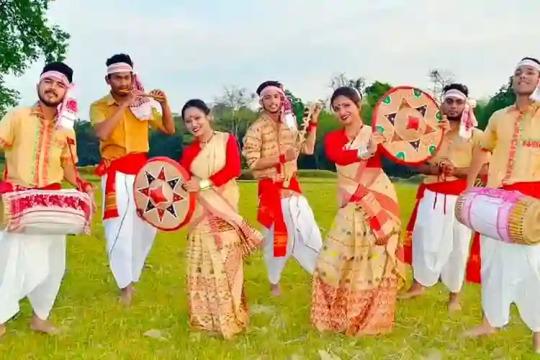
1 note
·
View note
Text

Wishing you a prosperous Makar Sankranti. Let's soar high with Social Image Builder.
#FestiveGreetings#DigitalMarketing#MakarSankranti#MaghBihu#MaghiSankrant#Makaravilakku#Pongal#Sabarimala#Sakraat#Khichdi#Uttarayan#MaghaSaaji#Suggi#Ghughuti#Maghi#PoushParbon#lohri#lohricelebration#kitesurfing
0 notes
Text
Happy Pongal 🌽🐄☀️
Happy Makar Sankranti, Happy Magh Bihu, Happy Uttarayana, Happy Maghi, Happy Maghe Sankranti, Happy Shakrain
Mr Grade India Services Private Limited
1 note
·
View note
Text
Happy Bhogi

0 notes
Photo
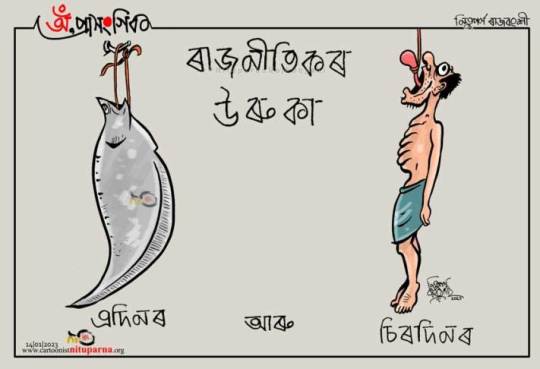
(via উৰুকা)
0 notes
Text
Makar Sankranti is a festival that is celebrated across the country with different names, but the essence of the celebration remains the same. From flying kites to making sweet delicacies, the festival is a true celebration of life, love and unity. So, let's come together and celebrate the beauty of Makar Sankranti, the festival that unites us all. . . Visit Website👉 https://grainic.com/

0 notes
Text
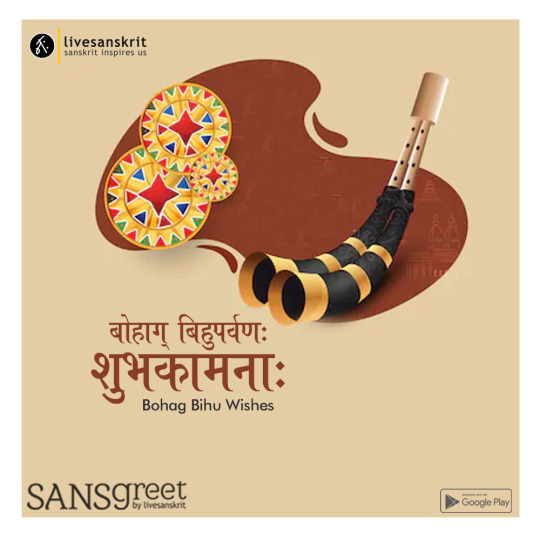
Send from Sansgreet Android App. Sanskrit greetings app from team @livesanskrit .
It's the first Android app for sending @sanskrit greetings. Download app from https://livesanskrit.com/sansgreet
Bihu.
Bihu is a set of three important Assamese festivals in the Indian state of Assam—Rongali or Bohag Bihu observed in April, Kongali or Kati Bihu observed in October, and Bhogali or Magh Bihu observed in January. The Rongali Bihu is the most important of the three, celebrating spring festival. The Bhogali Bihu or the Magh Bihu is a harvest festival, with community feasts. The Kongali Bihu or the Kati Bihu is the sombre, thrifty one reflecting a season of short supplies and is an animistic festival.
#sansgreet #sanskritgreetings #greetingsinsanskrit #sanskritquotes #sanskritthoughts #emergingsanskrit #sanskrittrends #trendsinsanskrit #livesanskrit #sanskritlanguage #sanskritlove #sanskritdailyquotes #sanskritdailythoughts #sanskrit #resanskrit #bihu #bihufestival #bihudance #rongalibihu #katibihu #bhogalibihu #maagh #assam #assamese #maghbihu #assamtourism #assamfestival #indianfestivals #harvestfestival #celebratingsanskritp
#greetingsinsanskrit#sanskritgreetings#sanskrittrends#trendsinsanskrit#livesanskrit#sanskrit#celebratingsanskrit#incredibleindia#indianarmy
0 notes
Text
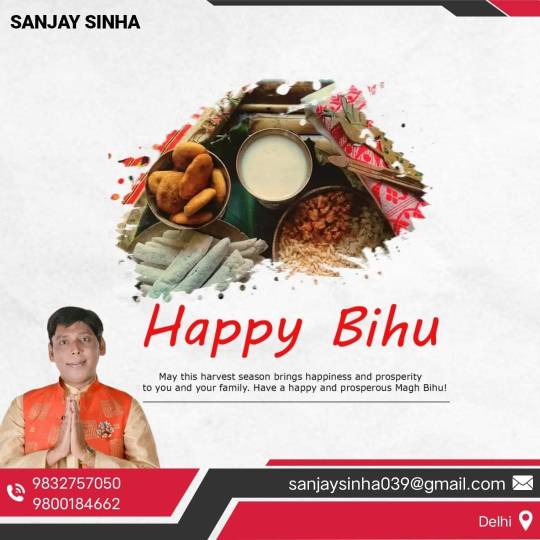
Happy Magh Bihu!
My warmest greetings to all, especially to my sisters and brothers of Assam & North East. May this special festival further the spirit of unity, joy and prosperity in the society.
#MaghBihu
#Happy Magh Bihu!
#SanjaySinha
1 note
·
View note
Photo

Sweets, kites, and harvest delights! A festive quartet unfolds. #minigolfindia #india #festival #festive #indian #indiapictures #like #share #comment #pongal #pongalcelebration #pongal2024 #makarsakranti #sakranti #lohri #lohricelebration #lohrihampers #lohrifestival #maghbihu #mumbai #delhi #gurgaon #happy #happyday #trending #trend #celebration
0 notes
Text

শুভ মকর সংক্রান্তি, লোহরি, পঙ্গল এবং মাগ বিহু উপলক্ষে আমি আমার শুভাকাঙ্ক্ষীদের আন্তরিক শুভেচ্ছা জানাই। এই ফসল উৎসবগুলি ভারতের সম্প্রদায় এবং অঞ্চল গুলিকে সৌভ্রাতৃত্ব, ভালবাসা এবং স্নেহের সাথে আবদ্ধ করুক। উৎসব প্রাচুর্য, সমৃদ্ধি এবং নতুন সুযোগের যুগের সূচনা হিসাবে চিহ্নিত হউক।On the auspicious occasion of Lohri, Makar Sankranti, Pongal and Magh Bihu, I extend warm greetings and good wishes to all my well-wishers. May these harvest festivals bind the communities and regions of India in fraternal love and affection. May the festivals mark the commencement of an era of abundance, prosperity and new opportunities.◉ ORM008000CW03107 #lohri #makarsankranti2023 #Pongal2023 #MaghBihu #makarsankranti #pongal
0 notes
Text

1 note
·
View note
Photo
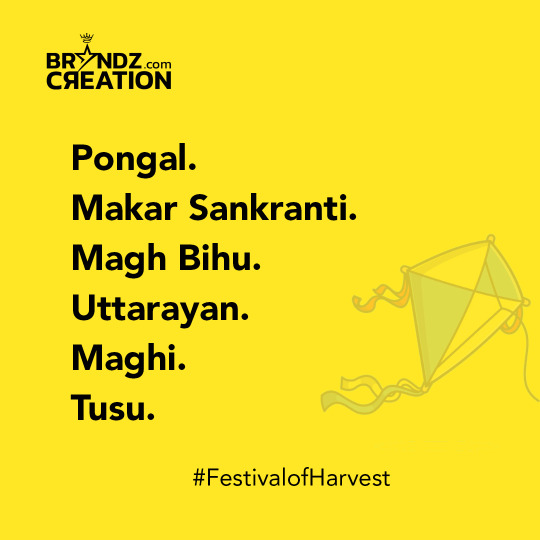
Wish You All a Very Happy Makar Sankranti, Magh Bihu, Uttarayan, Pongal, Maghi and Tusu.
It Happens Only In India..
#HappyMakarSankranti #brandzcreation #MaghBihu #uttrayan #pongal #maghi #tusu #festivalofharvest
0 notes
Photo
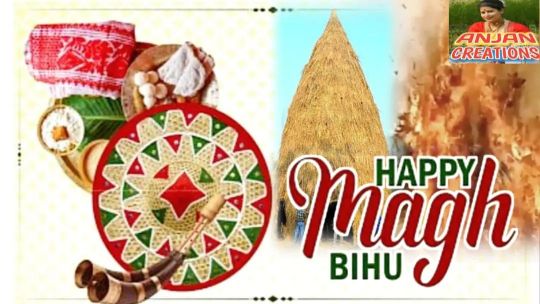
Happy bhogali bihu to all my dear friends https://youtu.be/i5OajM8GKA0 #bhogalibihu #maghbihu #uruka #assamesebihu #assamesebihusong #anjancreations https://www.instagram.com/p/CYwh3rjJGgH/?utm_medium=tumblr
0 notes
Photo

(via ভেলাঘৰ)
0 notes
Text

"‘Maker’ Sankranti is the maker of movement. As Sun moves into Capricorn, the night & day, the balance of life, the yin & yang, the dark & light, all balance out. The best time to release & reinvent yourself!
‘All that change’ is life itself.
Much love & blessings on
#makarsankranti#pongal#maghbihu#lodhi#yinyang#life#yog#abhyasschoolofyoga#Naamdeo#onlineyoga#ttc#Sadgurudeo#yogee#yogawiththemaster#Yoga#NaamDeoQuotes
0 notes